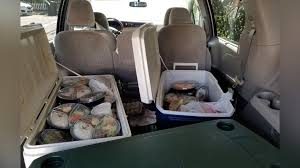This is a few months old, but if Frank’s in it, I’ll run it, late but not never.
 The following quote is attributed to Frank Yiannas, FDA Deputy Commissioner for Food Policy and Response:
The following quote is attributed to Frank Yiannas, FDA Deputy Commissioner for Food Policy and Response:
“The FDA is committed to providing innovative food safety approaches that build on past learnings and leverage the use of new information and data. Today we’re announcing a partnership with the California Department of Food and Agriculture (CDFA), the University of California, Davis, Western Center for Food Safety (WCFS), and agricultural stakeholders in the Central Coast of California to launch a multi-year longitudinal study to improve food safety through enhanced understanding of the ecology of human pathogens in the environment that may cause foodborne illness outbreaks.”
“The launch of this longitudinal study follows a series of E. coli O157:H7 outbreaks in recent years linked to California’s leafy greens production regions, particularly three outbreaks that occurred in Fall 2019. Due to the recurring nature of outbreaks associated with leafy greens, the FDA developed a commodity-specific action plan to advance work in three areas: prevention, response, and addressing knowledge gaps. We’ve already made great strides executing our 2020 Leafy Greens Shiga toxin-producing E. coli (STEC) Action Plan by engaging with state partners to implement new strategies for preventing outbreaks before they occur, collaborating with industry partners to assess and augment response efforts when an outbreak occurs, and analyzing past leafy greens outbreaks to identify areas of improvement important to enhance leafy greens safety.”
“In alignment with the FDA’s New Era of Smarter Food Safety initiative, the findings from this longitudinal study will contribute new knowledge on how various environmental factors may influence bacterial persistence and distribution in the region, and how those factors may impact the contamination of leafy greens.”
The California longitudinal multi-year study will examine how pathogens survive, move through the environment and possibly contaminate produce, through work with water quality, food safety, and agricultural experts from CDFA, the WCFS, representatives from various agriculture industries, and members of the leafy greens industry.










